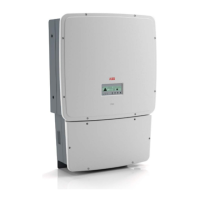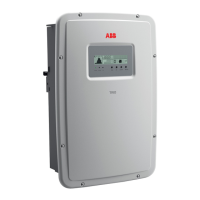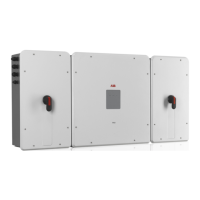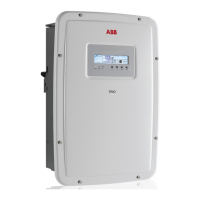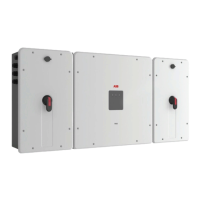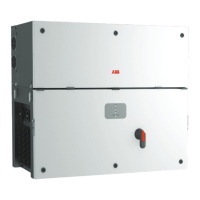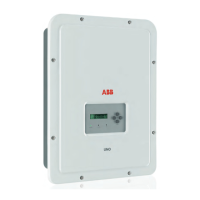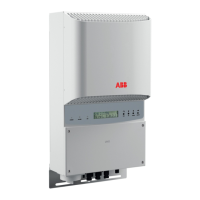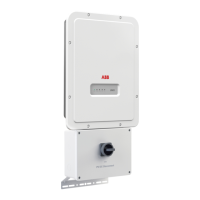Auxiliary grounding electrode conductor (GEC)
Transformerless inverters do not required a grounding electrode conductor (GEC). A GEC is
required only when a DC bonding jumper is present. Because transformerless inverters operate
from oating arrays, neither side (POS or NEG) of the array is bonded to ground; hence, no
internal bonding jumper exists.
Section 690.47(D) of the 2014 NEC allows for auxiliary electrodes to be installed. Should an
auxiliary electrode be desired, the following directions are to be used to make the connection.
When the grounding electrode conductor is to be run inside the same conduit as the AC output
conductors, the GEC should be connected inside the inverter at either one of the two open
sockets marked for grounding on the AC terminal block.
If the grounding electrode conductor is to be run outside of a conduit, this conductor should be
connected to the grounding point 31 outside of the inverter.
• Using proper tooling, crimp a compression type grounding lug, rated for at least 1000V on the
end of the grounding electrode conductor.
• Connect the compression lug to the bottom of the wiring box at the marked grounding location
by passing the locking screw through the lug to connect the wiring box and bracket as shown
below.
Caution! It is very important not to drill a hole in the wiring box to pass the grounding
electrode through. Furthermore, the anti-condensation valve 21 should not be
removed to pass the grounding electrode through. Either of these actions affects
the environmental rating of the inverter and could void the warranty!
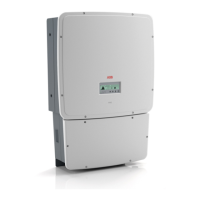
